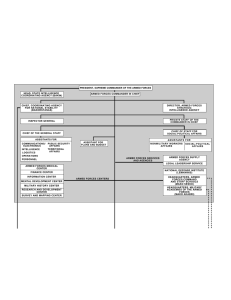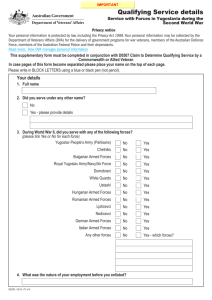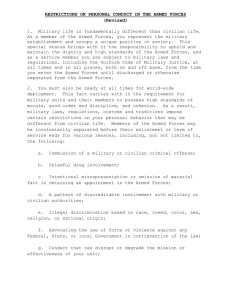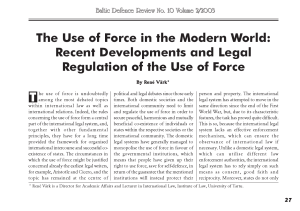Black Americans, a little-known tradition of arms Gary Mauser
advertisement
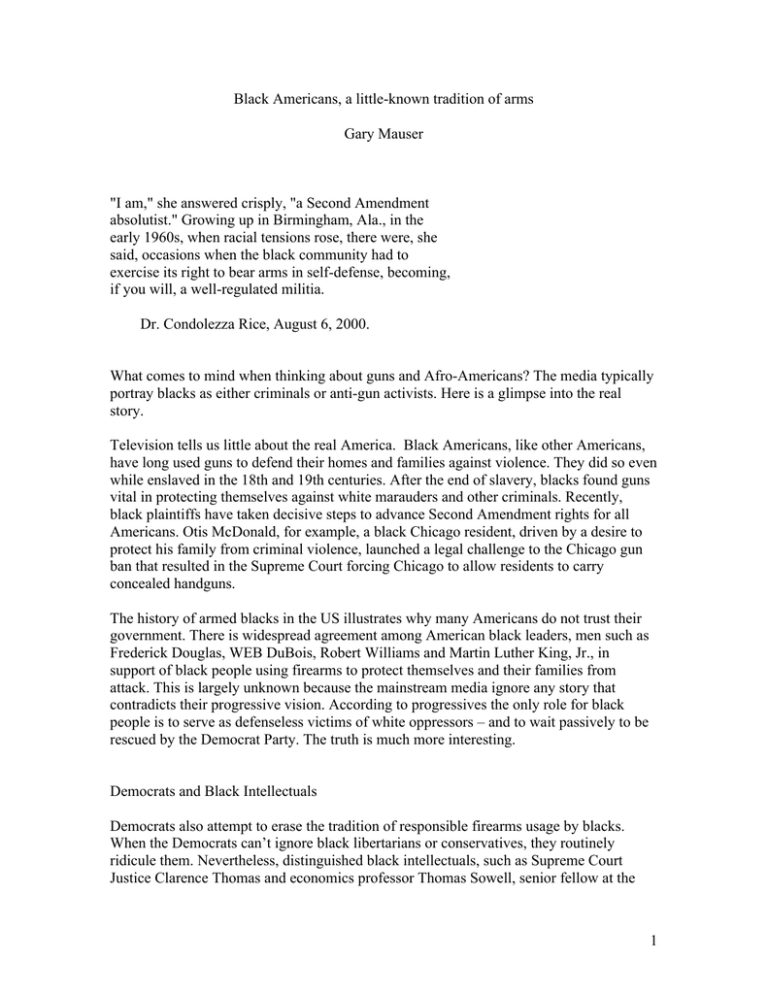
Black Americans, a little-known tradition of arms Gary Mauser "I am," she answered crisply, "a Second Amendment absolutist." Growing up in Birmingham, Ala., in the early 1960s, when racial tensions rose, there were, she said, occasions when the black community had to exercise its right to bear arms in self-defense, becoming, if you will, a well-regulated militia. Dr. Condolezza Rice, August 6, 2000. What comes to mind when thinking about guns and Afro-Americans? The media typically portray blacks as either criminals or anti-gun activists. Here is a glimpse into the real story. Television tells us little about the real America. Black Americans, like other Americans, have long used guns to defend their homes and families against violence. They did so even while enslaved in the 18th and 19th centuries. After the end of slavery, blacks found guns vital in protecting themselves against white marauders and other criminals. Recently, black plaintiffs have taken decisive steps to advance Second Amendment rights for all Americans. Otis McDonald, for example, a black Chicago resident, driven by a desire to protect his family from criminal violence, launched a legal challenge to the Chicago gun ban that resulted in the Supreme Court forcing Chicago to allow residents to carry concealed handguns. The history of armed blacks in the US illustrates why many Americans do not trust their government. There is widespread agreement among American black leaders, men such as Frederick Douglas, WEB DuBois, Robert Williams and Martin Luther King, Jr., in support of black people using firearms to protect themselves and their families from attack. This is largely unknown because the mainstream media ignore any story that contradicts their progressive vision. According to progressives the only role for black people is to serve as defenseless victims of white oppressors – and to wait passively to be rescued by the Democrat Party. The truth is much more interesting. Democrats and Black Intellectuals Democrats also attempt to erase the tradition of responsible firearms usage by blacks. When the Democrats can’t ignore black libertarians or conservatives, they routinely ridicule them. Nevertheless, distinguished black intellectuals, such as Supreme Court Justice Clarence Thomas and economics professor Thomas Sowell, senior fellow at the 1 Hoover Institute, continue to play important roles in defending individual liberty for all Americans. Joining this eminent group is Nicholas Johnson, a black Fordham law professor who was the lead author of a well-received legal tome, Firearms Law and the Second Amendment. His recent book, Negroes and the Gun, the black tradition of arms (Prometheus Books, 2014) tells the captivating story of armed black Americans. He graphically portrays a vital part of the American experience that is all but unknown. It is eye opening to read about these farmers, doctors, janitors and ministers using firearms to protect themselves, their families or their neighbors from attack. Unfortunately, not all of these stories of armed self-defence end happily, but many do. Only war freed the slaves in the United States. The Civil War was precipitated by the Supreme Court’s 1857 Dred Scott decision destroying the delicate balance between free states and slave states. The Court denied Dred Scott’s claim to be free even though he had lived as a free citizen in a free state after escaping slavery many years earlier. The court argued that blacks couldn’t be citizens, because if they were, then they would enjoy full citizenship rights, including being allowed to have and use guns. Republicans freed the slaves After the Civil War, the federal government, dominated by Republicans, passed the 13th, 14th and 15th Amendments with the express purpose to free the slaves and guarantee them full citizenship, including voting rights and the right to “keep and bear arms.” The Republicans ruled Congress because almost all Democrats, being from Southern states, had resigned to join the rebels at the start of the war. Reconstruction, following the Civil War (1865 to 1877), was a tumultuous period. In the countryside of the former Confederacy, ex-slaves and former slave owners attempted to work out a way to live with each other. Unfortunately, this often involved violence. Many of the newly freed slaves armed themselves, not only to hunt for food but also to defend their families from criminal attack. White supremacy had been reestablished by 1877, in part through the Ku Klux Klan enforcing Jim Crow laws and working in connivance with racist local police. Importantly, this period saw the first general gun control laws introduced – primarily to disarm blacks. Black Americans have long owned and used firearms for personal protection. Not all such uses turned to their advantage, particularly when the local authorities backed up their attackers. But, consistent with modern research, no shots are fired in almost all cases of defensive gun use. Aggressors back down when confronted with armed force, so blacks could often save themselves by brandishing a firearm. Early in the 20th century, black communities organized to defend their legal rights, especially the right to armed selfdefence. In one famous case, the National Association for the Advancement of Colored People (NAACP) hired Clarence Darrow to defend Dr. Ossian Sweet and his family, accused of murder in 1925 for shooting and killing members of a white mob. 2 Self-defence and political nonviolence Professor Johnson explains how the black leadership simultaneously embraced private self-defence and political nonviolence without contradiction. Martin Luther King carefully distinguished the use of arms to defend specific individuals against an immediate attack from using arms to advance group political goals. The first is the natural right of everyone, and consequently armed self-defence has won the widespread support of many including Mahatma Gandhi. The second is much more problematic, and in that case, King argued for nonviolent “socially organized masses on the march.” During the 1960s Reverend Martin Luther King, Jr. and the Southern Christian Leadership Council staged dramatic scenes where blacks attempted to exercise their civil rights in a nonviolent manner provoking a violent response from white authorities. King saw nonviolence as a strategy, not ideological dogma. Television images of blacks being beaten, gassed, even attacked by vicious dogs, helped pressure the federal government to wrest control from racist state governments. This approach was effective in winning the support of many Americans for the plight of blacks under the Jim Crow laws of the South. Then-president John Kennedy finally saw the political advantage of backing Reverend King. Despite relying on nonviolence, Reverend King was not a pacifist. Behind these carefully scripted scenes, patrols of armed blacks protected the nonviolent marchers and demonstrators. Armed stand-offs between KKK and the black militia, such as the Deacons for Defense and Justice, Civil Rights Guards, and other spontaneously formed groups of friends and neighbors, never made it to television, but many such confrontations, often at night, effectively protected the lives of numerous pacifists and demonstrators. It was a transformational time. White pacifists travelled south to participate in challenging racist authorities. The pacifists were shocked to discover that their black allies came from a rural tradition of armed self-defence. Professor Johnson recounts instances where black communities pushed the boundary of armed personal defence by arming themselves to rally as a group in order to rescue individuals threatened by white mobs or even local authorities. Perhaps surprisingly, such efforts were often effective. As in individual armed self-defence, firearms often did not need to be fired to be effective. At other times, however, community defence efforts turned out badly. The 1960s and the Second Amendment For many reasons, as Johnson explains, this all began unraveling in the 1960s when the civil rights movement metastasized into black radicals advocating political violence under the rubric of armed self-defence. At the same time, young black leaders won election as mayors of large urban cities, such as Los Angeles, Detroit and Atlanta. Unfortunately, they proved unable to control urban riots and black-on-black violence (usually drug- 3 related) in their cities. Opportunistically, the new generation of black leaders joined with the emerging gun-control movement to create the progressive coalition that exists to this day. With the complaisance of the media, the modern paradigm soon supplanted the long tradition, generations old, of armed individual self-reliance. The Second Amendment is only secondarily about people defending their families from criminals. Its primary purpose is to enshrine the natural right of citizens to defend themselves against government depredations. As the quotation from professor Rice observes, members of the black community have traditionally armed themselves to resist the unacceptable actions of malevolent authorities. Their efforts fall squarely in the American republican tradition and in accord with common sense. 4

